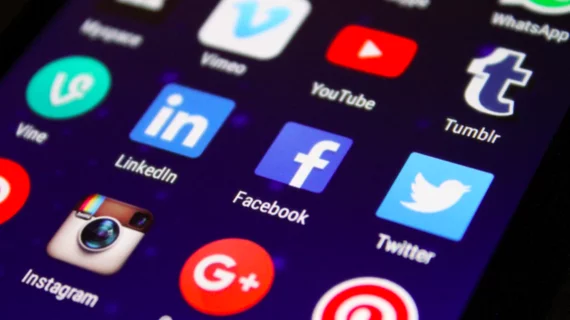Is social media an educational tool in radiology departments outside the US?
Social media is used by radiologists at Johns Hopkins Aramco Healthcare in Saudi Arabia less as a tool for educational purposes and professional issues and more as a way to communicate with friends and family, according to the authors of new study published in the Journal of Multidisciplinary Healthcare.
“Even though social media represents an alternative to improve the education of radiology and other fields of medicine, these technologies have not been used extensively for this purpose on a world scale; only in the United States and other advanced countries have some efforts been made in this regard,” wrote researchers Turki M. Alanzi, PhD, and Bashayr Alshahrani of the Department of Health Information Management at the Imam Abdulrahman Bin Faisal University in Dammam, Saudi Arabia.
Alanzi and Alshahrani sought to evaluate the use of social media among members of the radiology department staff at Johns Hopkins Aramco Healthcare, a local health system.
A total of 57 staff members in the radiology department accepted an invitation to participate in a web-based survey using Google Forms. Almost 55 percent of the staff were technologists. A majority of the respondents had an undergraduate degree and about 51 percent had more than 10 years of experience. About 38 percent were aged 30-40, about 25 percent were 20-30, about 23 percent were aged 40-50 and 16 percent were aged above 50 years.
WhatsApp was the most frequently used social media tool, as a total of 60 percent of the respondents said they used it. The next most frequently used was Facebook at 11 percent. LinkedIn, YouTube, Instagram and Twitter—all frequently used in western countries—were used by less than 10 percent of respondents.
About 48 percent managed social media multiple times per day. A total of 68 percent of respondents used social media tools to communicate with friends and 61 percent used them to communicate with family. Only 12 percent used social media for educational purposes and 20 percent used the tools for professional reasons. Approximately 39 percent of respondents had no barriers to use social media, though the majority of respondents noted time, private matters, negative replies, lack of information and experience and uncertainty about the usefulness of social media were barriers.
The researchers frequently compared social media usage between their findings and those of the US. In multiple surveys, they found social media was used extensively as a professional tool in 41 percent of radiologists, while another survey noted 59 percent of radiologists used social media for the same purpose.
The researchers noted it is necessary to develop programs “aimed at raising awareness and increasing the use of social networks for educational and professional purposes” with special focus on Johns Hopkins Aramco Healthcare but that their results should not be indicative of all radiology departments across Saudi Arabia.
“This research is an exploratory study and the results are not intended to be generalized to all members of the radiology departments in Saudi Arabia,” the researchers wrote. “Future studies in this area may be aimed at surveying professionals in the radiological departments of different hospitals, clinics, and universities in the Kingdom of Saudi Arabia.”

